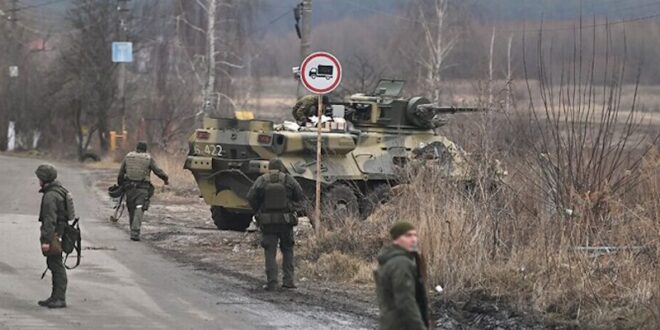The grim realisation that our world has changed is starting to sink in among strategic analysts. Russia’s invasion of Ukraine on 24 February, hot on the heels of a landmark China–Russia joint statement, is ushering in a new era of ideological competition and great power confrontation that is upending many assumptions of the post-Cold War international order.
Key among these are assumptions that formal security architectures and economic interdependence can be relied upon to constrain great power aggression. Russia’s behaviour is throwing these ideas into disarray and left many to ponder the implications for future stability in Europe and the wider world. In the Asia Pacific, there could be significant ramifications for other incendiary security challenges, such as escalating arms races and the future of Taiwan.
There’s a lot of work to be done to make sense of this evolving situation, but one thing is clear: we’re living in a more dangerous world and need to respond wisely. We must find ways to minimise strategic risk, which means improving channels of communication between allies and adversaries. We need to use these channels — new and existing — to build a common sense of purpose in the pursuit of peace and stability. The alternative is an unconstrained global arms race, escalating the risk of existential conflict between the great powers and a war in which there will be no winners.
Before the world changed for the worse in February, the Asia-Pacific Leadership Network (APLN) was involved in a project promoting security cooperation in Northeast Asia — a region lacking the formal security mechanisms of most other regions, such as those that have broken down so dramatically in Europe. The project, which was funded by the UK Foreign and Commonwealth Office and jointly run with the Carnegie Endowment for International Peace and the Royal United Services Institute, engaged regional leaders on fostering a sense of common purpose and building better relations to reduce risks and prevent conflict amid Northeast Asia’s increasingly complex security challenges.
Two broad areas of agreement emerged from a series of workshops, consultations and meetings. First, states should adopt an ‘eco-system approach’ to security-building in which they leverage existing security mechanisms to help safeguard the regional and global commons. Some channels of cooperation already exist, such as collaborative efforts to tackle transboundary environmental risks, respond to natural disasters, and build public health infrastructure. By expanding and deepening these initiatives, states in the region can build habits of cooperation that over time foster trust and transparency and improve relations.
Second, since governments don’t always keep regional and global interests at the forefront of national policy, states need support from non-governmental initiatives to fill gaps in dialogue when conditions are not conducive to state-level talks. Politically sensitive security challenges, such as arms races and territorial disputes, sometimes need to be addressed in an informal setting by neutral organisations that can convene officials from adversarial states and encourage off-the-record conversations on addressing strategic risks. These meetings, known as Track 2 and Track 1.5 dialogues, can be bolstered by civil society initiatives that emphasise our common humanity across national, cultural and social borders.
Based on these areas of agreement, APLN created a list of recommendations to improve security cooperation in Northeast Asia, which has been endorsed by influential policy experts from across the region and beyond. These experts regard the eco-system approach as the best hope of managing the region’s security challenges, which can often appear so big and intractable as to be paralysing. Rather than trying to tackle the most sensitive issues head on, the recommendations focus on taking small steps where common ground exists. Habits of cooperation build trust, which makes cooperating on traditional security challenges more feasible over the longer term.
The Northeast Asia security architecture project could have wider relevance now that the war in Ukraine has so brutally exposed the fragility of the rules-based order and the vulnerability of Europe’s once lauded formal security architecture. Whatever the war’s outcome, building a sense of common purpose among states in the post-war Euro-Atlantic environment will be a difficult but necessary task. Focusing on collaborating to address the threats that face all humanity, from pandemics to climate change, might offer the best hope of bridging national divides and bringing some semblance of stability back to the region and the world.
 Eurasia Press & News
Eurasia Press & News


